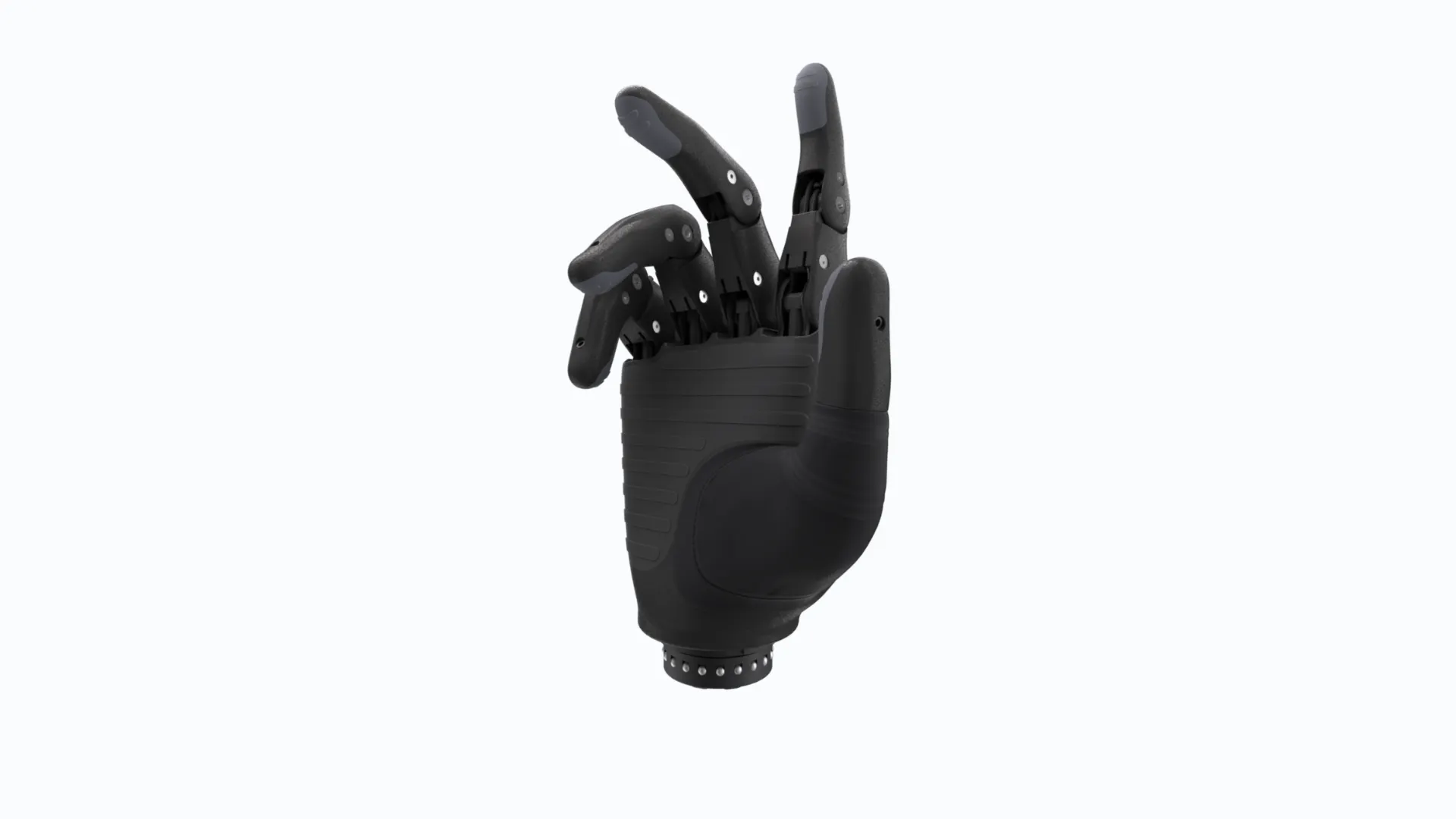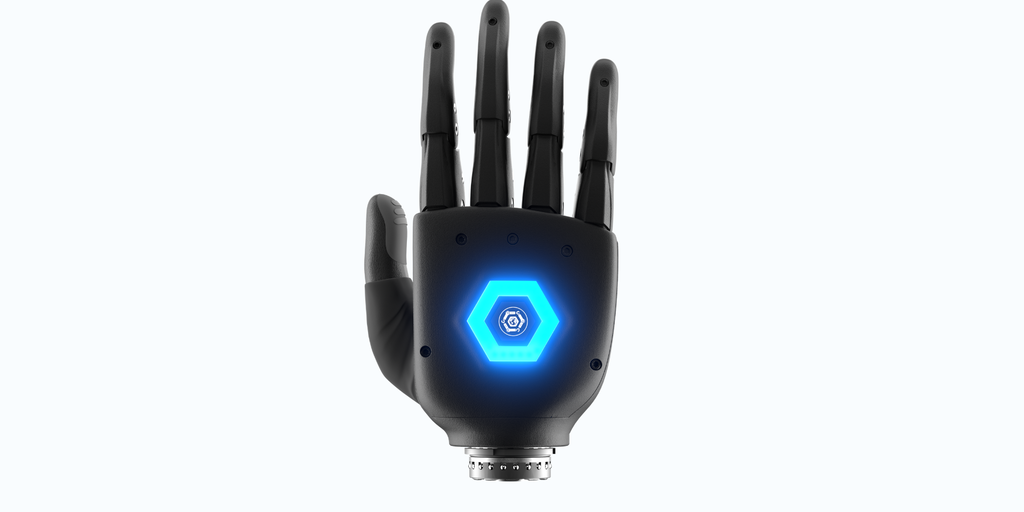Replacing missing limbs with a robotic version is no longer the stuff of science fiction, with researchers and developers designing new technology that fuses the human body with machines to provide users new abilities. While transhumanists look towards a day when humans and computers fully merge, engineers are developing more practical, real-world applications for this sci-fi staple.
For Ryan Saavedra, founder and CEO of San Antonio-based robotics company Alt Bionics, designing robotic limbs that customers will want to wear—and that insurance companies pay for—takes not only function and style but also a lower price point.
As Saavedra told Decrypt, the idea for what would become Alt Bionics came after a rock climbing accident he suffered while studying electrical engineering at the University of Texas at San Antonio. With an injured finger, he said he was unable to use his hand for six months.
“I’ve always liked to tinker with things, so I kind of experimented with the idea of what if I lost the finger,” Saavedra told Decrypt. “I experimented with the cardboard from a Ziploc bag box, some yarn, a straw, and a spare Arduino starter kit that I had lying around. And I made this very rudimentary mechanical finger.”
Similar to a Raspberry Pi, Italy-based Arduino makes open-source small-form motherboards that can be used for various applications.
Doing further research, however, Saavedra said he was surprised that the cost for a typical bionic hand ranged from $20,000 to $150,000.
“That didn’t really sit right with me because I made this little mechanical finger, and sure, it’s crappy, but I made it for like $10 bucks,” Saavedra said. “So the gears started turning, and I started pulling all that I could for my classes and set up to see if I could build my own for less.”
The result of this research, Saavedra said, was the founding of Alt Bionics and its flagship bionic hand, the Genesis Hand. The prototype bionic hand, Saavedra explained, was based on an open-source design by UK-based Open Bionics.
“We now have a fully functioning, and the world’s most affordable, bionic hand for amputees,” Saavedra said. “The price point is about $5,000 and hopefully completely covered by insurance.”
For U.S. residents, health insurance does cover prosthetic limbs and devices. According to the official Medicare.gov website, Medicare Part B covers 80% of the cost of prosthetic devices. Depending on the state, some residents may receive 100% of the cost covered, including for personal exoskeletons.
According to Alt Bionics, the Genesis hand weighs 500 grams, or around 1.1 pounds. The lightweight design aims to reduce strain on robotic arms or prosthetic socks. Another key feature that Saavedra said helps with positive feedback is the ability to replace a finger if it breaks easily.
“So in our price tag, you get a full bionic hand, and four replacement fingers as well as five replacement fingertips,” he said. “We essentially added the right to repair to our hands.
“That’s been a huge thing from both clinicians as well as amputees because the typical process is that if you break something, you send it back to your prosthetist, who’s your clinician, and if they can’t fix it, they send it back to the manufacturer, which would be us,” he explained.
Saavedra said the Genesis hand uses electromyography (EMG) sensors to measure muscle activity when connected to the user’s upper arm. This sends signals to the hand to move the fingers and close for different grip styles.
“It’s been designed and built for daily use,” Saavedra said, noting for example, gardening. “We have a grip limit of about 20 pounds.”

Researchers have spent the better part of a decade designing tools that will give disabled individuals, many unable to move at all, the ability to do so and regain their independence.
In August 2023, Northwell Health used AI-powered brain implants to restore movement and sensation for Keith Thomas, a 45-year-old quadriplegic, after a driving accident severed his spine.
In January, Elon Musk’s Neuralink announced that it had implanted the first Brain-Computer Interface (BCI) chip in a human brain. The recipient of the BCI chip, Noland Arbaugh, was able to not only play video games using the Neuralink chip but also set a new brain control world record of 8.0 BPS.
Others working on bionic limbs include the Massachusetts Institute of Technology (MIT), which in a recent report highlighted an ongoing clinical trial to test whether a person could maintain continuous neural control of a bionic limb to restore natural movement.
“For centuries, scientists and technologists have sought artificial leg replacements that fully capture the versatility of their intact biological counterparts,” the report said. “However, biological gait requires coordinated volitional and reflexive motor control by complex afferent and efferent neural interplay, making its neuroprosthetic emulation challenging after limb amputation.”
Saavedra said he foresees a future when technology like Alt Bionics will be fused with those like Neuralink, where instead of sensors connected to the arms, a person can control their bionic hand with their thoughts.
“I think there’s eventually going to be this unified linkage between [Alt Bionics] and what other companies building bionic hands and legs working on with things like Neuralink that can interface directly with the signal,” Saavedra said. “The same technology is used to capture the signals for an amputee that it is for Neuralink, they’re just capturing the signals at the root.”
Feedback, Saavedra said, has been overwhelmingly positive, despite Alt Bionics’ small sample size.
“My friend’s cousin was an Army Ranger, and he was involved in an IED explosion in Afghanistan,” Saavedra said. “I brought it over to him and asked him what he wanted to do with it. All he wanted to do was bring in his attending nurses and flip them all off.
“The whole room was smiles and laughter,” he added. “Then, on a more serious note, his father turned to me, and he said, ‘You given my son a part of his life back.’”
Edited by Ryan Ozawa.
Generally Intelligent Newsletter
A weekly AI journey narrated by Gen, a generative AI model.

